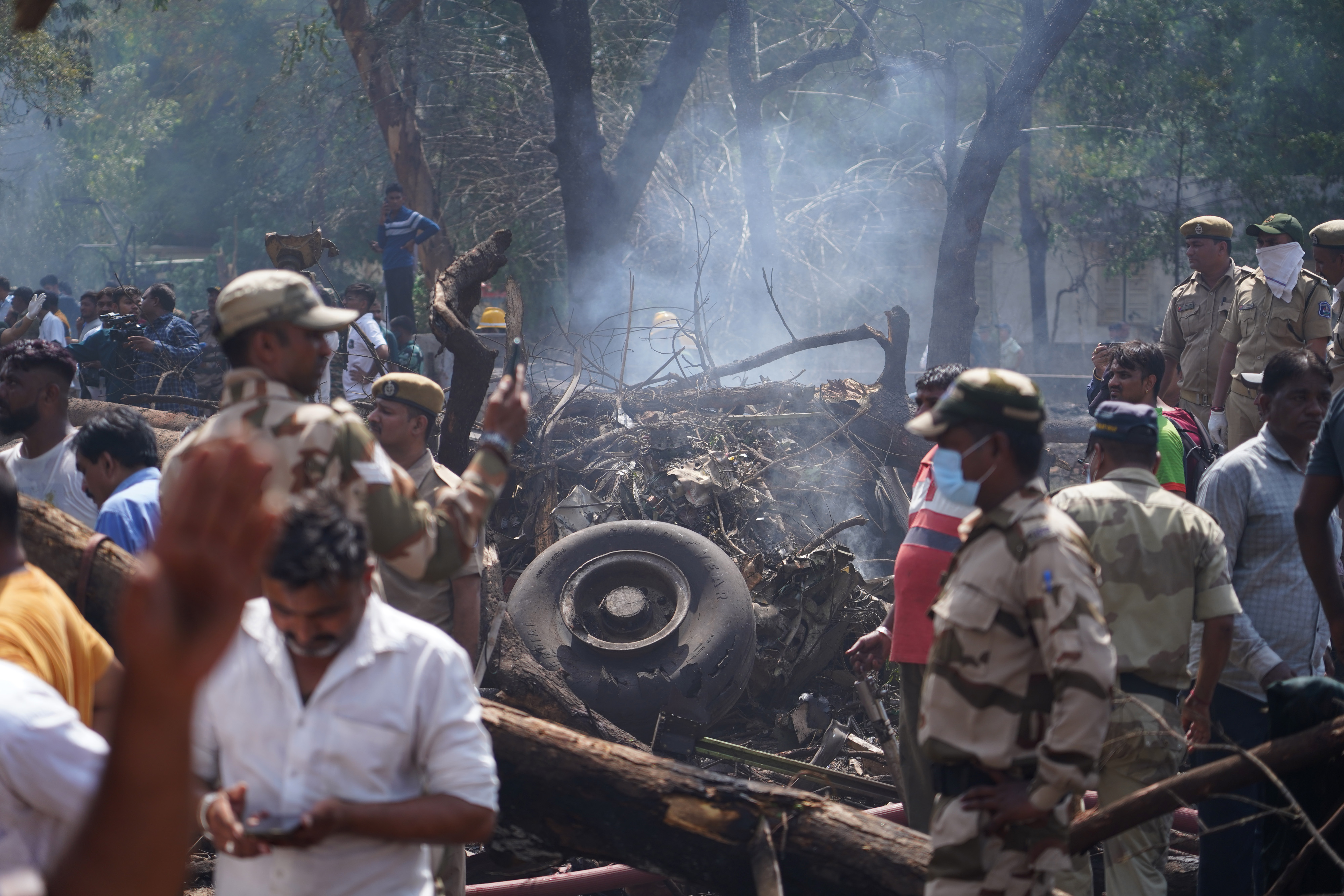
A cockpit voice recording of doomed Air India Flight 171 indicates that it was the younger co-pilot who asked his more experienced colleague why he turned off the plane’s fuel-supply switches, according to people familiar with the matter.
The information, from people who asked not to be identified because they’re not authorized to speak publicly, reveals for the first time who said what in the cockpit. A preliminary report from India’s Aircraft Accident Investigation Bureau released last week included a description of the exchange, including one pilot’s denial that he turned off the switches, without identifying the individual speakers.
Aviation experts had speculated that it was first officer Clive Kunder who had posed the question to captain Sumeet Sabharwal given Kunder was the pilot flying and would have had his hands full — one on the yoke commanding the widebody into the skies, and the other on the throttle controlling the aircraft’s speed. The Wall Street Journal previously reported who said what in the exchange.
ALSO READ: Air India crash rekindles debate over cockpit video recorders
The initial investigation showed that the fuel-control switches on the Boeing Co 787 Dreamliner were turned off immediately after the plane departed. While the move was reversed about 10 seconds later, it was too late to avert the June 12 crash that killed 260 people on board the plane and on the ground in the city of Ahmedabad.
How and why the switches came to be turned off — cutting the flow of fuel to the engines — are now the key lines of inquiry for investigators. Officials are probing whether it could be the result of a failure of the plane’s systems or human error.
And while the new details add fresh perspective on the confusion in the cockpit during the 32 seconds between takeoff and crash, investigators still haven’t drawn any definitive conclusions.
The cockpit recording could be even more revelatory, according to Michael Daniel, a retired Federal Aviation Administration inspector and accident investigator.
ALSO READ: India orders all domestic airlines to check Boeing fuel switches
“There are multiple microphones around the cockpit including their headsets,” said Daniel.
The mic positions mean it’s possible that it captured and discerned not just the sound of the fuel switches being turned off, but the direction from which it came in the cockpit — offering investigators definitive information as to who cut off fuel supply to the planes engines, he said.
Earlier this week, India’s civil aviation authority ordered an inspection of cockpit fuel switches on Boeing 737 and 787 aircraft operating in the country in an effort to ascertain whether the crash was caused by equipment failure.
Aviation psychologists and medical specialists are also involved in the investigation — a typical practice across the aviation industry — to probe the role of the pilots in the crash.
READ MORE: Air India jet's fuel switches in focus, as crash preliminary report nears
The first officer expressed surprise that the fuel switches were off and then panicked, the Wall Street Journal reported, citing people familiar with US officials’ early assessment of evidence. The captain seemed to remain calm, according to the report. The Airline Pilots’ Association of India has pushed back on human action as the cause.
The AAIB didn’t immediately respond to requests for comment sent outside normal business hours. The US National Transportation Safety Board, which is assisting on the investigation, referred questions to the Indian authorities. Boeing also referred questions to the AAIB. Air India and GE Aerospace, which manufactured the engines, declined to comment.
Air India Chief Executive Officer Campbell Wilson said in a memo to employees on Monday, viewed by Bloomberg News, that the report identified no cause and didn’t make any recommendations. “I urge everyone to avoid drawing premature conclusions as the investigation is far from over,” he said.


